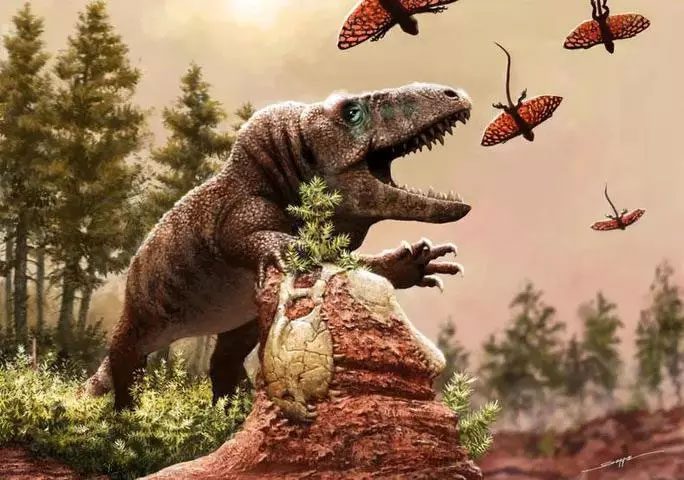Harvard researchers have discovered a phenomenon that led to the extinction of 86% of Earth’s species and the emergence of terrifying creatures such as dinosaurs, pterosaurs, and marine reptiles to take their place. This same phenomenon is currently surrounding humanity.
A research team from the Department of Organismic and Evolutionary Biology and the Museum of Comparative Zoology at Harvard University utilized comparative models between the evolutionary history of species on Earth and climate developments over various periods, leading to the bold hypothesis mentioned above.
The study published in the journal Science Advances asserts that the first members of the dinosaur lineage were born from a series of phenomena that humanity hears about daily and is also creating: climate change and global warming.

Dinosaurs may have emerged due to climate change caused by global warming – (Image: SCITECH DAILY)
According to the research cited by SciTech Daily, scientists focused on the Permian-Triassic climate crisis, which occurred from the middle of the Permian period to the middle of the Triassic period, approximately 265 to 230 million years ago.
This period marked two severe mass extinctions, the first occurring 261 million years ago and the second 252 million years ago. These events eliminated 86% of the species that existed at the midpoint of the Permian period.
A correlation emerges: The Triassic period is known as the first era that “conceived” the dinosaur lineage, which later diversified into numerous species of dinosaurs on land, flying reptiles (pterosaurs) in the sky, and marine reptiles like ichthyosaurs and plesiosaurs dominating the oceans.
The research team asserts that the Permian-Triassic events, which seemed deadly, triggered the birth of these monsters, or more specifically, a period before and after this era, forming a continuous 60 million years of climate change due to global warming enveloping the planet.
The rise in global temperatures has been revealed in the geological record, accompanied by intriguing changes in the fossil record, as the evolutionary response of reptiles appears to be extremely sensitive to climate.
The rate of adaptive anatomical changes began to increase from the early Permian period (around 294 million years ago), coinciding with the onset of a series of climate changes. From 261 to 235 million years ago, global warming surged dramatically due to massive volcanic eruptions, creating the hottest period in Earth’s history and also the most vigorous evolutionary phase for reptiles.
“Some groups changed very quickly, and a few even faster, but almost all reptiles evolved more rapidly than before,” stated lead author Tiago R. Simoes.
From that point, the world dominated by mammals began to replace the few reptiles of the Permian period with a diverse world of reptiles in the Triassic period, including the dinosaur lineage that thrived throughout the Jurassic and Cretaceous periods, until they were wiped out by an asteroid.
As these large reptiles emerged, they continued to respond to climate change by migrating to temperate regions or venturing into aquatic environments for better survival. This adaptability allowed this monstrous lineage to grow stronger and spread across the globe, leaving behind an extraordinarily diverse fossil record.

















































